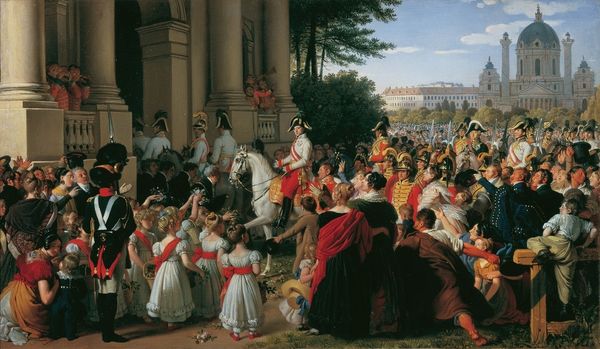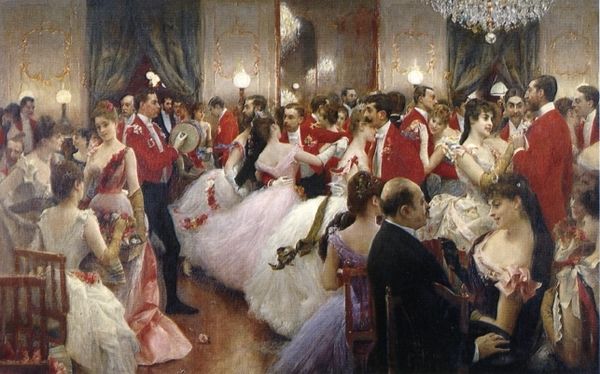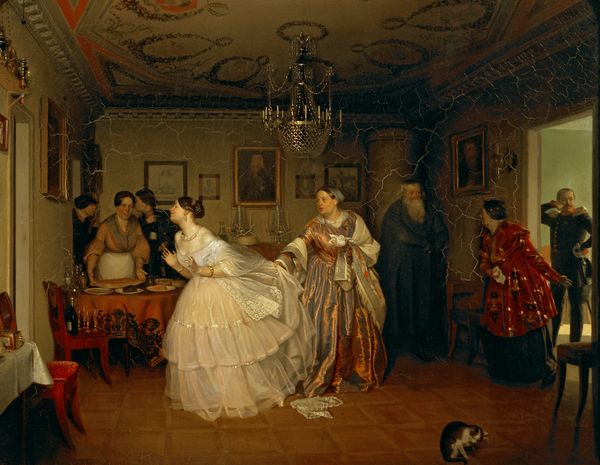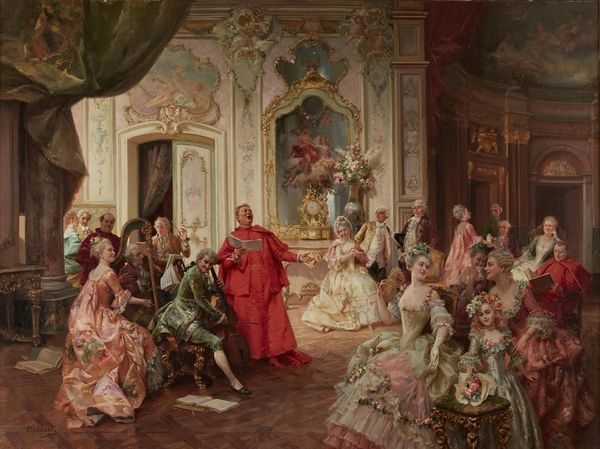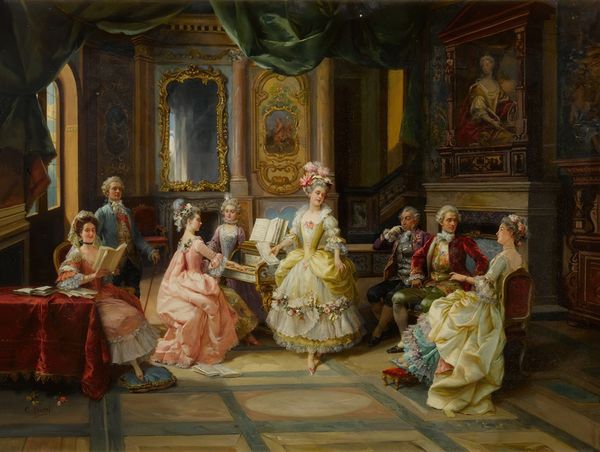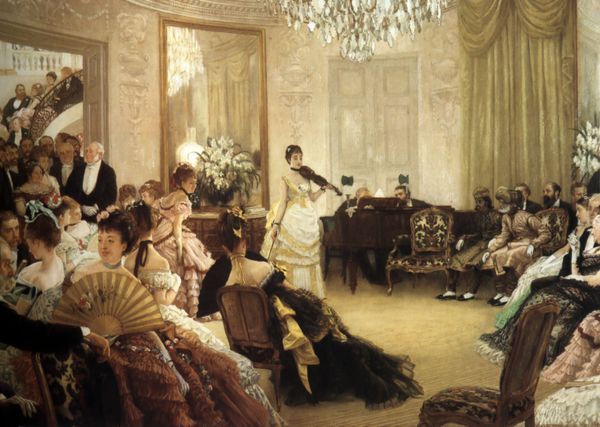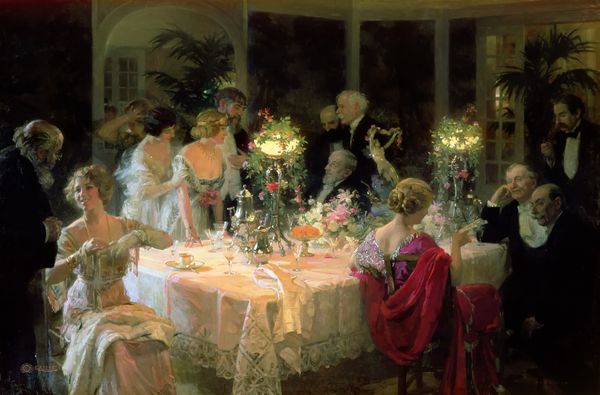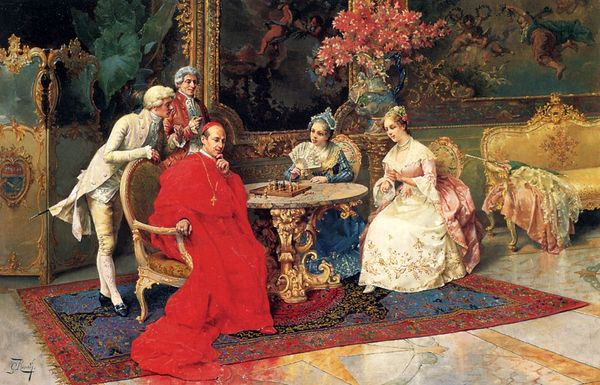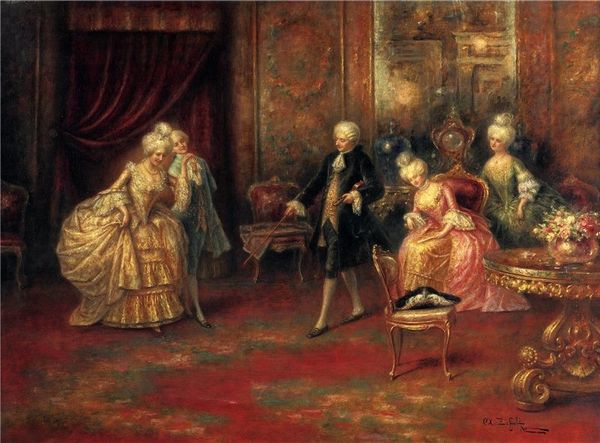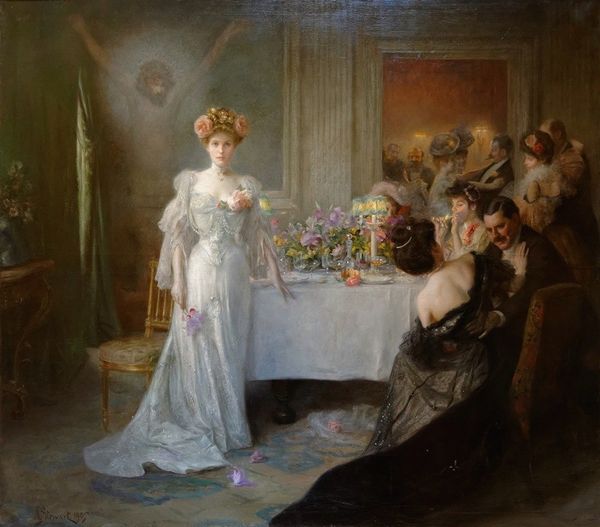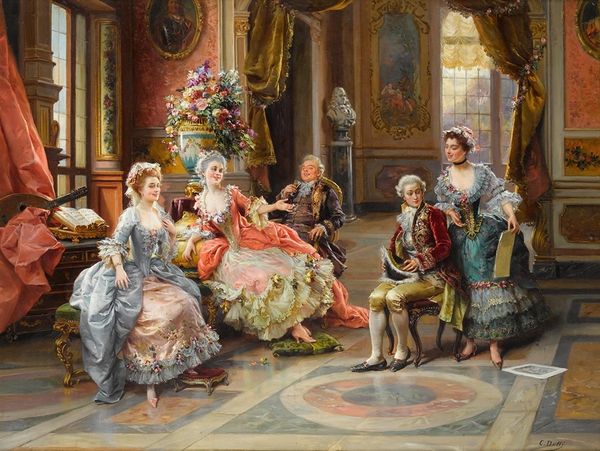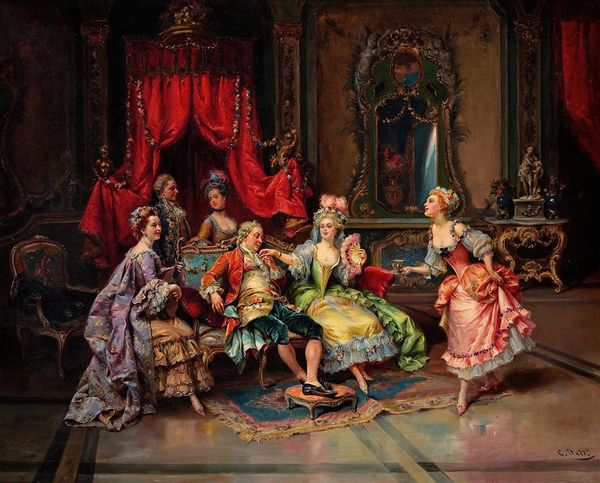
painting, oil-paint
#
portrait
#
festivity
#
painting
#
impressionism
#
oil-paint
#
group-portraits
#
genre-painting
Dimensions: 119.38 x 185.42 cm
Copyright: Public domain
Julius Leblanc Stewart painted “The Hunt Supper” on canvas, capturing a scene of upper-class leisure. But what might such a scene tell us about the society in which it was made? Painted in France during the late 19th century, the image presents an opulent party, likely following a hunt, with formally dressed guests mingling in a lavish setting. It evokes the Belle Époque, a period marked by optimism, peace, and economic prosperity in Europe. The red coats worn by the men suggest their participation in the hunt, a traditionally aristocratic activity, and symbolize their social standing. The composition and setting reflect the cultural values of the time, emphasizing social hierarchy and ritualized social interaction. Stewart's style, influenced by Impressionism and academic painting, conveys a sense of elegance and refinement, celebrating the established social order. To understand this painting better, we might examine etiquette manuals and conduct sociological surveys of the period, which could reveal much about the codes and assumptions of the time. Ultimately, the meaning of art resides not only in the image itself but also in the web of social relations that surround it.
Comments
No comments
Be the first to comment and join the conversation on the ultimate creative platform.
